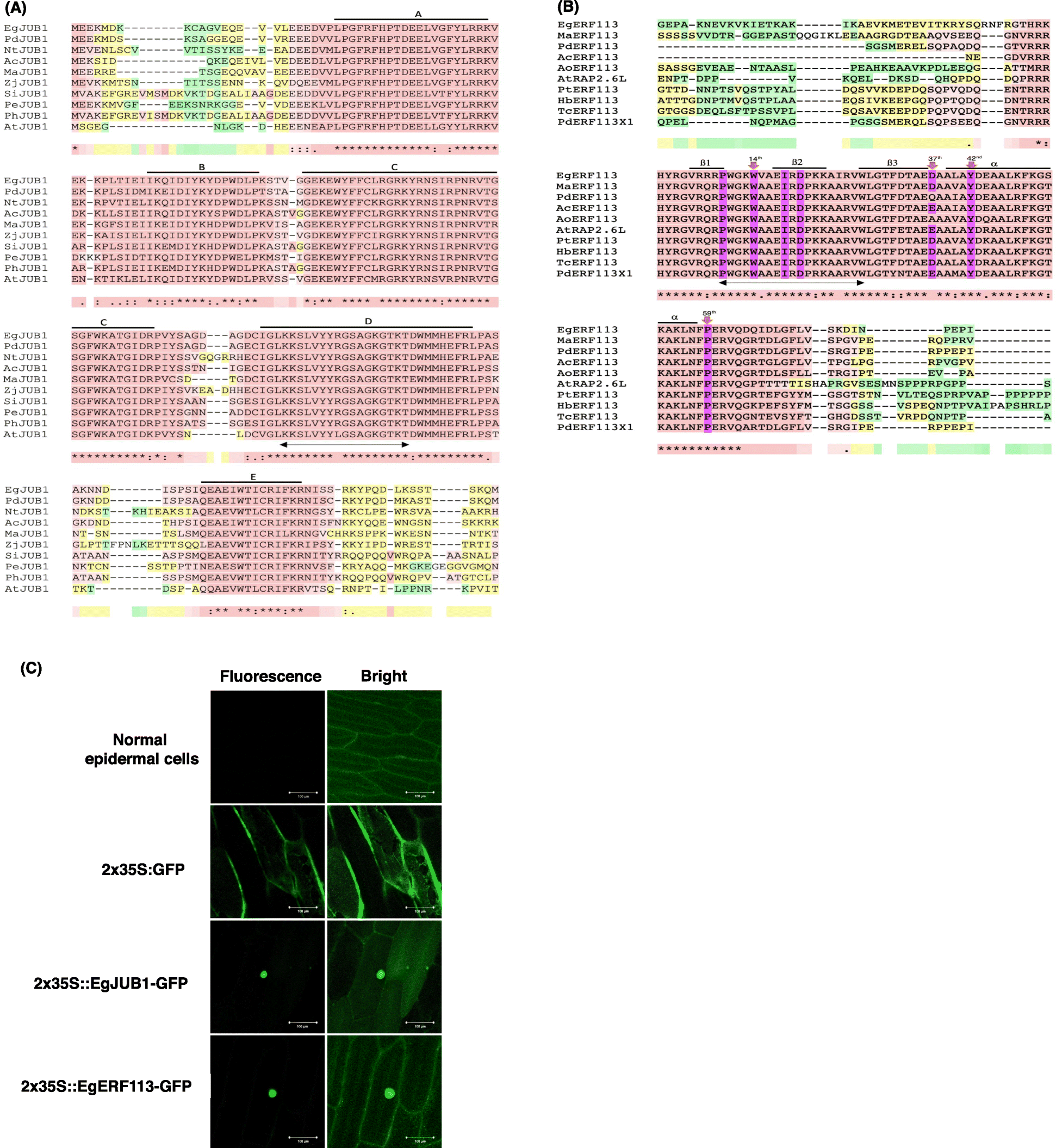Fig. 5

Sequence characterization and nuclear localization of EgJUB1 and EgERF113. a Multiple sequence alignment of the deduced amino acid sequence of EgJUB1 protein with other JUB1 in different species. Highly conserved NAC subdomains (A to E) are indicated by black lines. b Multiple sequence alignment of the deduced amino acid sequence of EgERF113 protein with other ERF113 in different species. Pink shadings indicate specific amino acids for binding to GCC-box and DRE/CRT motifs. Structure-based alignment was constructed using mode Expresso of T-Coffee software http://tcoffee.crg.cat/apps/tcoffee/do:expresso. The asterisks indicate fully conserved residues. The colons indicate the conservation of strong group. The full stops indicate the conservation of weak group. The dashes indicate no consensus. The red shadings indicate reliable and consistent alignment. Yellow and green shadings indicate average reliability while blue shadings indicate very poor alignment. The putative nuclear localization signal is shown by double-headed arrow below the sequences. The deduced amino acids sequences of JUB1 and ERF113 are derived from different species; Ananas comosus (Ac), Arabidopsis thaliana (At), Asparagus officinalis (Ao), Elaeis guineensis (Eg), Hevea brasiliensis (Hb), Musa acuminate (Ma), Nicotiana tabacum (Nt), Panicum hallii (Ph), Phalaenopsis equestris (Pe), Phoenix dactylifera (Pd), Populus trichocarpa (Pt), Setaria italic (Si), Theobroma cacao (Tc) and Ziziphus jujube (Zj). c Subcellular localization of EgJUB1 and EgERF113 in onion epidermal cells. EgJUB1-GFP and EgERF113-GFP were expressed in the nuclei of cells and fluorescence signals were visualized with confocal microscope. Scale bars = 100 μm